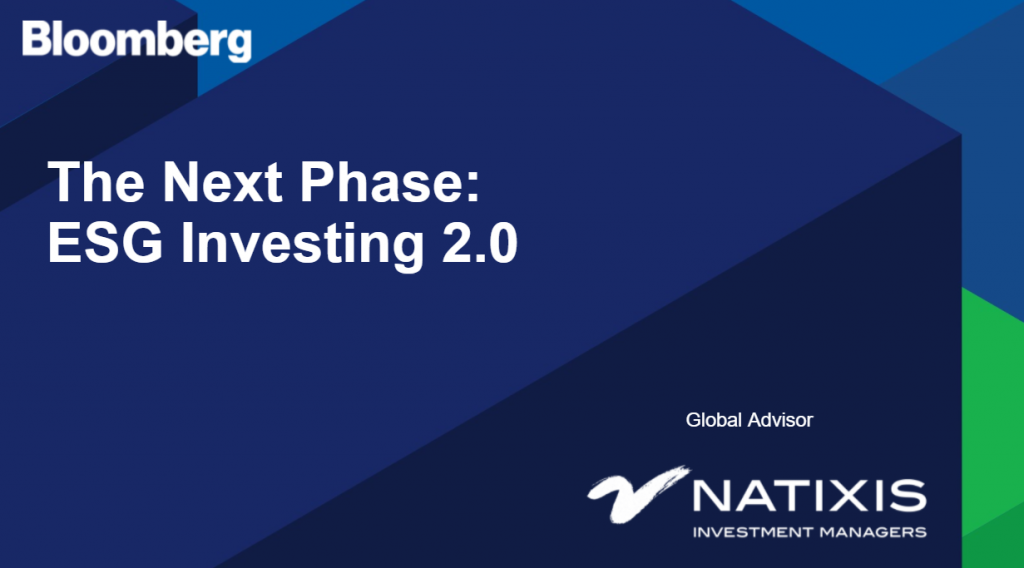
Event Highlights
The Next Phase: ESG Investing 2.0
July 15, 2021
By Bloomberg Live
As the world prepares for a post-pandemic future, executives and policy makers are committing to responsible environmental, social and governmental practises with renewed vigour. With interest in ESG investing increasing, what is needed to make it more mainstream? And what tools do investors need to understand the correct approach for them based on their goals and larger investment strategy?
This virtual roundtable convened leaders from finance, business, government and academia to share ESG investing strategies and actionable next steps.
Click here to view video of this event.
Speakers included:
- Kiran Aziz, Senior Responsible Investment Analyst, KLP
- Kate Dumas, Consultant, Prime Buchholz
- Alex Edmans, Ph.D., Professor of Finance, London Business School
- Laurent Galzy, CEO ERAFP
- Samantha Hill, Managing Director, Sustainable Investments, CPPIB
- Andreas Hoepner, PhD., Professor of Operational Risk, Banking & Finance at University College Dublin (also sits on the EU’s Platform for Sustainable Finance)
- Harald Walkate, Head of ESG, Natixis Investment Managers
- Fabrizio Zumbo, Associate Director, European Asset and Wealth Management Research, Cerulli Associates
Moderated by:
Shaheen Contractor, ESG Analyst, Bloomberg Intelligence
Event Highlights:
To kick off the event, Kiran Aziz, Senior Responsible Investment Analyst, KLP talked about the importance of engagement. “Even if we are a passive investor, engaging with the company is the most important tool we have, because as an investor we need to set the expectations, but at the same time it’s important for us to understand where the company stands in terms of what kinds of ESG risk they are exposed to, and what their strategy is going forward.”
Laurent Galzy, CEO, ERAFP highlighted three main ESG priorities at ERAFP. “Energy transition, the financing of SME and mid-caps to support employment and tech innovation, and financing affordable housing for our beneficiaries.” Galzy emphasized that energy transition is the biggest priority, with the aim to have a carbon neutral portfolio by 2050.
In sharing what the next phase of ESG should focus on, Dr Alex Edmans, Professor of Finance, London Business School cautioned companies that feel they need to address all the sustainable development goals. “To be an ESG company, you don’t need to tick every single box, but you need to understand what are the most material issues to you, and which are the ones where you have a unique comparative advantage and interest.”
It’s about understanding how the nature of business risk has changed, according to Samantha Hill, Managing Director, Sustainable Investments, CPPIB. “ESG has now moved to being within those business critical elements to understand and to get right. These are 21st century business risks and opportunities.” Hill continued, “You’d be hard pressed today, to find a board or management team that doesn’t list ESG and climate among the most pressing business issues that their company faces.”
It’s a mix of both societal and financially driven factors that have contributed to the huge growth in ESG, according to Fabrizio Zumbo, Associate Director, European Asset and Wealth Management Research, Cerulli Associates. “The assets of ESG mutual funds and ETFs in Europe have experienced spectacular growth over the last year, and the trend is continuing. The value proposition is growing, but it is also specialising. This spectacular growth has been accompanied by drastic shifts towards sustainability, not just in the investor community, but also in society overall, particularly post the Covid pandemic.”
Harald Walkate, Head of ESG, Natixis Investment Managers talked about the importance of enabling projects with purpose.. “There are many academics doing research on what kinds of impact investments we’re seeing, and making a distinction between impact enlightenment and impact enabling. More people are really interested in the latter – finding ways that investing really enables things to happen that otherwise wouldn’t happen. Blended finance is a really good example of that because you’re finding activities or companies that aren’t investable, at least not for institutional investors today because they don’t meet the risk return or scale requirements, and then finding ways to work with governments or development banks to de-risk those and change the risk return profile of these investments, to make those projects investable, at least at a larger scale.”
Kate Dumas, Consultant, Prime Buchholz talked about the importance of both mainstreaming and innovation. “We’re seeing increased demand lead to all sorts of new products, whether it’s scale and you have funds using engagement across a number of different asset owners, or something very niche on the impact side of things, such as digital equity or community development. It’s about really being able to find interesting solutions that weren’t there previously.”
When it comes to ESG investments, Dr. Andreas Hoepner, Professor of Operational Risk, Banking & Finance at University College Dublin elaborated on how funds are flowing. “The money is coming from investments, in particular direct primary market fixed income investments and fossil fuel firms, and it’s moving to those companies that are successfully transitioning from the climate perspective. They may be in heavy sectors, they may be in light sectors, but it’s certainly moving to those that helped to actually transition.”
——————————
Instagram: @BloombergLive
LinkedIn: Bloomberg Live
Twitter: @BloombergLive
Interested in more Bloomberg Live virtual events? Sign up here to get alerts.
——————————
